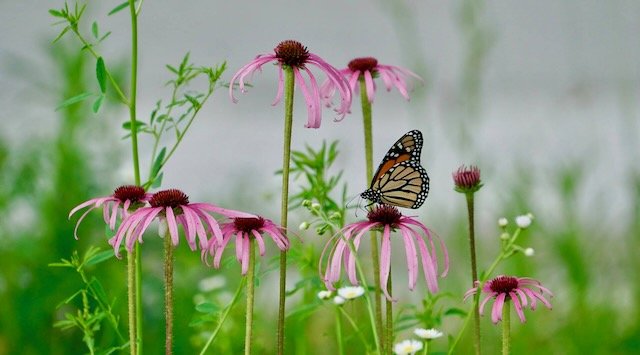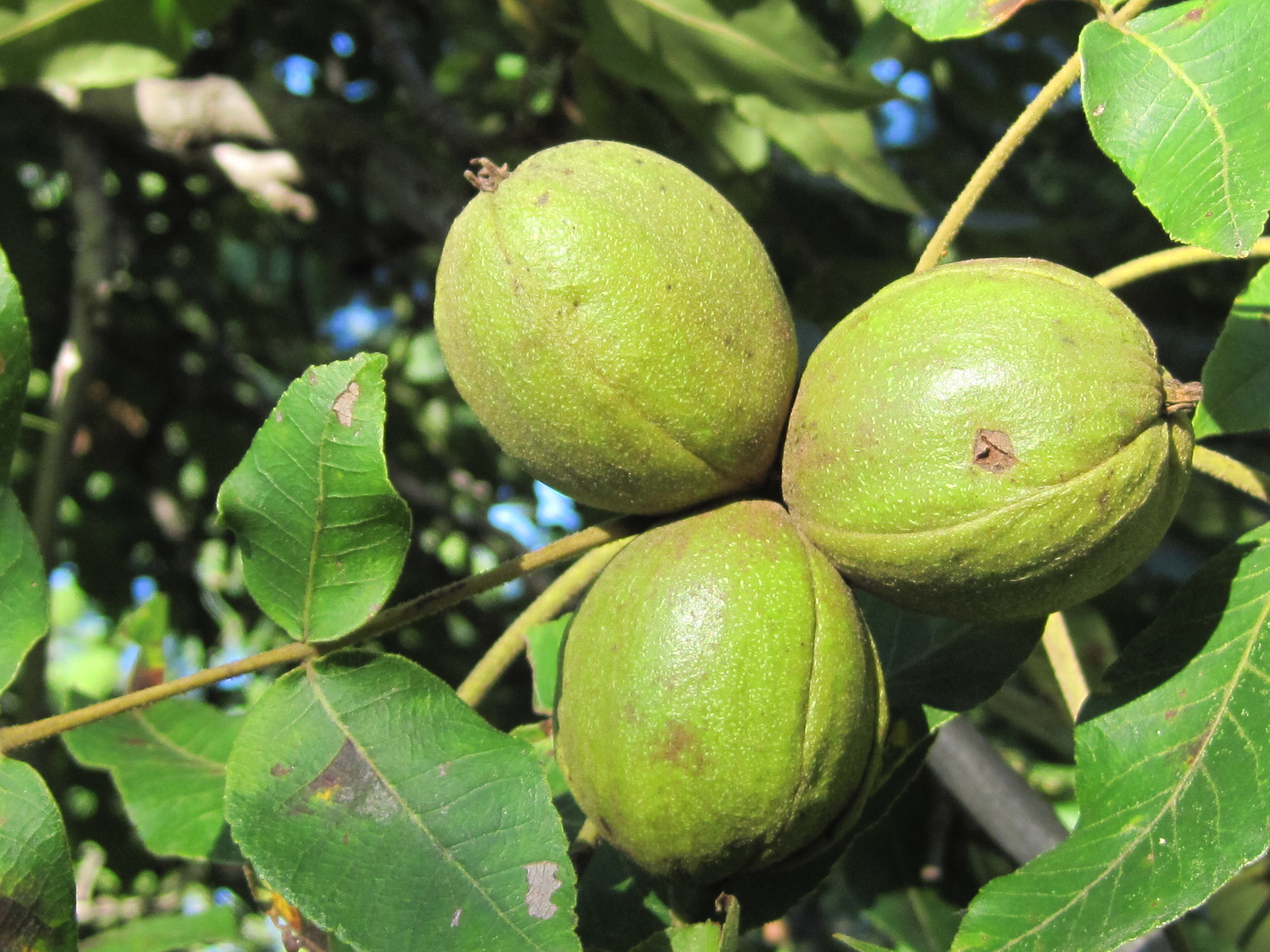Foxes are winter active and non-migratory. Courtship begins soon, so start watching for mating foxes. You may just have an opportunity to observe them romping, playing and chasing each other!
FESTIVAL OF EAGLES 2017
The Chert Glade Chapter of Missouri Master Naturalist, Missouri Department of Conservation, and the City of Stella will welcome eagle watchers to the small town of Stella, Missouri January 28th to observe eagles, our national emblem, in their natural habitat.
ANYTHING BUT ORDINARY By Jeff Cantrell
SQUIRRELS! NOVEMBER NATURALIST BY NUMBERS TOPIC
Common animals are not ordinary and they certainly are not boring. I recently started a bird behavior lecture on a nearby university campus with the American Robin in the opening remarks.
OUR CHARMING HICKORY TREES By Jeff Cantrell
Mockernut Hickory Tree
Naturalist by Numbers October topic: Ozark Hickory Trees
Chert Glades Missouri Master Naturalists we have seven species of hickory trees to learn, love and appreciate in our region. While we appreciate a hickory smoked chili relleno or fajita meat… there is so much more to the benefits of our Ozark hickories. We might scope out those porch lights for some underwings, Luna moths and Regal moths who all depend on our hickories. The Hickory Horned Devil is a rock star in the student’s scope of entomology and I have found them easy to rear for school program purposes.
I believe we all know the hickory trees are part of our native forest, but perhaps fewer people recognize the tree species individually. We might have heard of descriptions as “tough as a hickory”, and General Andrew Jackson was coined “Old Hickory” from his men’s admiration during the War of 1812.
I consider the hickory trees tough because when we refer to succession they would be considered a “pushing species”. They may sprout under much competition and shade on the forest floor and grow slowly at initial start. They will often however succeed slowly over the rival seedlings and reach for the canopy. Many hickory species can grow quite fast once they are released and free to grow in a canopy opening.
Other naturalists might label them tough, referring to their sinewy young branches and see the tree as a symbol of strength. It was just a generation or two ago when hickory handles supported a craftsman’s tools and were the choice handles of many farming implements. Pioneers forged homemade hammers with a shock-resistant hickory handle. Wooden hickory wheels were rolling beneath those westward bound Conestoga Wagons with the same shock-absorbing trait. Early professional baseball bats were legendary for their ash wood make-up; however a good number of neighborhood and school home runs are credited to a reliable hickory baseball bat.
Mockernut Hickory Nuts
Appealing to our culinary diversions, several hickory trees have appetizing nut meats. I grew up with a mockernut hickory in the backyard and the meats were tasty and moist. Though, I think it is close to impossible to crack them and obtain whole nuts. My cracking chores always resulted in small pieces. Many Native American groups pounded hickory nuts to a meal or extracted the milk from the nut meat and added the sweet ingredient to hominy and corn cakes. It has been described as rich as fresh cream. Other edible sweet hickory nuts include shagbark, shellbark, black hickory and the well-known pecan. The pignut hickory can be sweet or bitter, so it is a gamble for our taste buds, but Ozark free-ranging hogs loved them thus the charming namesake pignut. The feral pigs shared their fondness with many species of wildlife. The varieties of hickory nuts are essential in the diet of black bear, deer, chipmunks, beaver, squirrels, white-footed mice and wild turkeys.
The value of the hickory goes far beyond consumptive uses by humans and wildlife. They have a tremendous aesthetic value. Many species are very tall and have a narrow crown. Hickory trees like the pecan, mockernut and bitternut hickory can have a round or spreading crown if growing in open spaces. They can be very stately landscaping trees for the backyard and their fall color will not disappoint. Yellow is the signature fall foliage hue and it can vary from “Shagbark Golden” to my favorite “Mockernut Bright”.
Fall Walk Along Bee Creek with Jeff Cantrell
This autumn the native oaks and hickories will impress us with their winning colors. If you get the opportunity, join in as many walks as you can; take notice of the hickory species. They have a charm all their own.
Jeff Cantrell is an education consultant with MDC and technical adviser for MPF. He is also a member and mentor for the Chert Glades Chapter of Missouri Master Naturalists. Our chapter participates in a monthly nature scavenger hunt, Naturalist by Numbers, with topics of interest presented by Jeff to get us outside, observing nature and learning about natural events.
INVITE A MONARCH TO LUNCH - PLANT MILKWEED By Val Frankoski
The secret to having Monarch Butterflies in your yard is milkweed.
SOFT MAST HAS A BIG IMPACT By Jeff Cantrell
Naturalist by Numbers for September 2016: Soft Mast
I believe we will grow old saying, "It is all about the plants,” and of course, I’ll age along trying to point out to groups, educators, youth and budding naturalists how entwined and complicated our natural heritage works and thrives.
YOU CAN HELP excerpt from Missouri State Parks
You Can Help
The successful renewal of the Missouri Parks, Soils and Water Sales Tax is critical to the funding of the parks, soil and water conservation programs it supports. It will be on the November 8, 2016, ballot as Constitutional Amendment #1, and we need your help!
Why does it matter?
Missouri’s parks, soils and clean water are important to our quality of life, our health and our economy. More than 19 million people visit our state parks and historic sites annually, providing more than $1 billion a year in economic impact and supporting 14,000 jobs.
What does it do?
The sales tax works to maintain our state park system and keep it free, to maintain and improve our water quality and to combat soil erosion.
How does it work?
Constitutional Amendment #1 is a smart investment. It simply renews an existing program that has successfully protected our parks, soils and water for more than 30 years — with no increase in taxes.
So, how can you help?
Get involved and help support the renewal of the Parks, Soils and Water Sales Tax on November 8! We welcome you to join us in educating Missourians on the importance of renewing the Missouri Parks, Soils and Water Sales Tax.
Perhaps, one of the easiest ways is to follow Missouri Parks, Soils and Water Sales Tax Renewal on Facebook or Twitter and help us spread the word on social media. Share the information and videos you find on this website with your friends and family.
If you’d like to be actively involved or have a special opportunity to share the story of Missouri’s state parks, soils and water conservation efforts, there is atoolkit available that includes brochures, posters, stickers and a PowerPoint presentation for meetings. Yard signs are coming soon! Please complete and submit the form below with your requests or questions, and a Committee representative will contact you soon!
Note: the toolkit and form are available at this website:
MILKWEED VISITOR By Tamra Sunby
This eye-catching beetle shown here on Swamp Milkweed (asclepias incarnata) is the Swamp Milkweed Leaf-beetle (labidomera clivicollis).
It is aposematically colored, which means it is a species that advertise their distastefulness by being brightly colored.
This species displays the orange and black mimicry complex which includes the Monarch Butterflies. They feed on the leaves, stems, flowers and pollen of milkweed including Swamp and Common milkweed.
Tamra Sunby recently retired from the Monett School District as the Agriculture Instructor and FFA Advisor for twenty seven years. She joined the Chert Glades Chapter this year and attributes her interest in the Missouri Master Naturalist program to encouragement from Jeff Cantrell who has been an inspiration to her.
SUMMER FIELD TRIPS - GET OUT THERE!
What a great summer the Master Naturalists, Chert Glade Chapter, are having! Saturday, July 16, a nice geology field trip in McDonald County, and Sunday, July 17, 'The Color Purple' exploration on the prairie!
JUNE PRAIRIE STUDY By Val Frankoski
In late June, Chert Glades chapter members took advantage of an opportunity to learn more about prairie reconstruction and experience results of projects underway at Shawnee Trail CA. Early spring training sessions with Dave Darrow had not allowed us to actually see the fruits of his team’s labor and he had repeatedly offered to host a return when forbs were showy.





